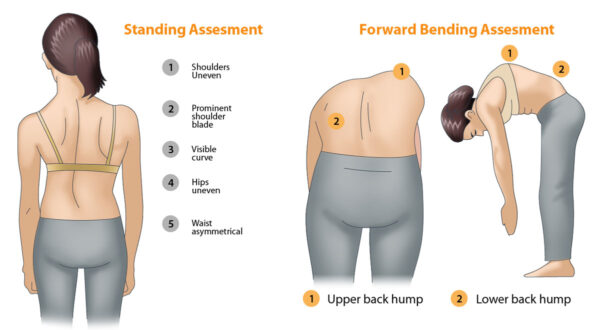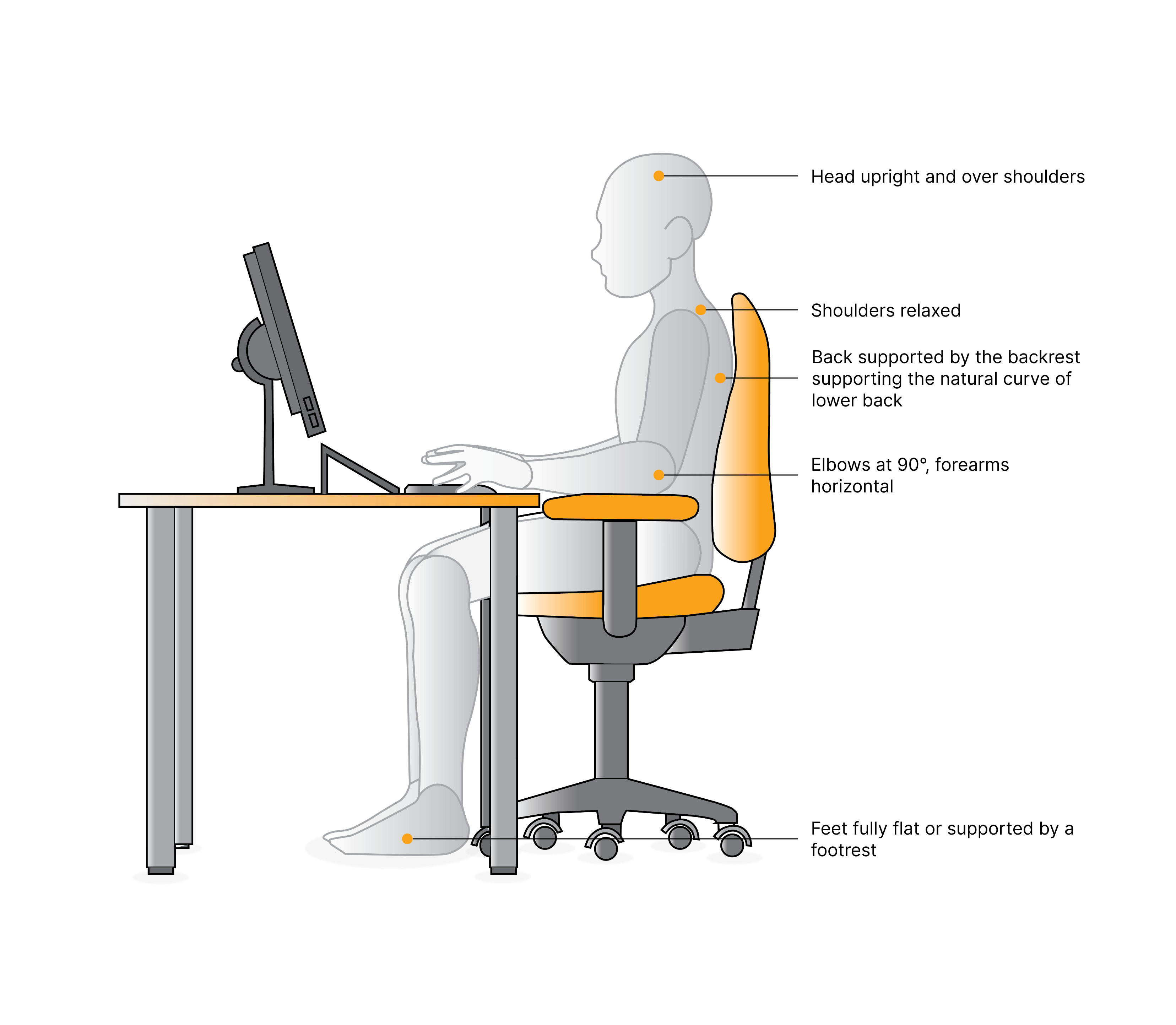When Does Scoliosis Develop?
Scoliosis occurs when the spine bends and rotates to either side, creating a C-shaped or S-shaped curve. Both children and adults can develop scoliosis at any age – and it’s a condition that can last a lifetime. However, it’s also a condition that becomes more common the older you get.
For example, it’s estimated that between 2% and 3% of adolescents have scoliosis, whereas upwards of 38% of adults over 60 have it. With that in mind, the following is a brief breakdown of when scoliosis develops and what you can do to stop the progression.
Progression Of Scoliosis
The term “progression” in scoliosis refers to the worsening of the condition over time. Although the spinal curve doesn’t always progress, it can. If the spine continues to curve more and more over time, it means that the condition is progressing.
On average, curves that measure between 30 and 50 degrees on the Cobb scale will progress between 10 and 15 degrees over a lifetime. If the curve measures over 50 degrees, it will likely progress at about 1-2 degrees per year.
Rapid Onset Scoliosis
Rapid onset scoliosis occurs when the curvature of the spine dramatically increases and worsens quickly over time. Generally speaking, rapid-onset scoliosis tends to happen in adolescents during puberty, when they grow and develop quickly. During the first year of puberty spinal growth is at a peak growth velocity, it’s during this stage of rapid growth that curves are at their greatest risk of rapid curve progression.
However, there are also cases of rapid progression in adults due to undiagnosed scoliosis that has been present since childhood. In adults, rapid progression doesn’t typically occur until older age, when the spine begins to deteriorate.
At What Age Does Scoliosis Start?
Most scoliosis cases are idiopathic, meaning there is no known cause. Although scoliosis can begin at any age, most idiopathic scoliosis cases begin during adolescence. The majority are diagnosed with idiopathic scoliosis as adolescents between 10 and 18.
In fact, adolescent idiopathic scoliosis cases account for 90% of all idiopathic scoliosis cases. However, infants (under the age of 3) and juveniles (ages 4 to 10) can also develop idiopathic scoliosis.
It’s also worth noting that in some cases (especially milder cases), adolescents with scoliosis may go diagnosed, and the initial diagnosis may not happen until the pain increases in adulthood.
Importance Of Early Detection
Early detection and treatment of scoliosis is crucial for preventing the progression of the condition. The earlier it’s diagnosed, the easier it is to stop the progression before it worsens.
If left untreated, scoliosis can continue progressing and can potentially cause various symptoms, such as pain, a lack of flexibility, and breathing difficulties. Once the curvature becomes too severe, it may require surgery to correct.
Early detection is important to ensure that it never reaches this point and will make it much easier to manage your symptoms and live a healthy and active life.
Ways To Keep The Curvature From Worsening
While several treatment options can help prevent progression and even correct the spinal curvature to a degree, there are also lifestyle changes that you can implement to help prevent the condition from worsening by keeping your spine healthy and strong. These strategies include the following:
Physical Exercise
Physical exercise can go a long way when it comes to helping patients with scoliosis. The proper spinal exercises can help you strengthen your core, which in turn can help reduce back pain. Posture corrective exercise may help improve overall body balance which can reduce back pain. Research has shown that patients that engage in regular physical activities respond better to scoliosis specific treatments.
Additionally, these exercises can help you improve flexibility and range of motion, which can reduce the amount of stress on the spine. However, if you have scoliosis, you must take extra care to ensure that you’re doing the correct exercises to avoid causing harm to your spine.
Adopt A Proper Ergonomic Setup At Work Or School
If you spend a significant amount of your day sitting in an office or at school, then it’s important to set yourself up in a way that puts your body in the correct position. For example, you should use an ergonomic chair and desk to help you maintain proper posture.
Additionally, make sure that your monitor is at a comfortable level so that you can look straight ahead rather than having to crane your neck up or down. Improper posture caused by a lack of ergonomics can cause scoliosis to worsen, so it’s essential to take the time to set up your workstation properly.
Maintain Good Nutrition And Hydration
Eating foods high in antioxidants and essential vitamins can help strengthen the bones, joints, and muscles that support your spine. Additionally, staying hydrated will help keep your joints lubricated and reduce the inflammation that can worsen scoliosis. Eating a well-balanced diet and drinking lots of fluids can help ensure your spine stays strong and healthy.
Be Wary Of Any Warning Signs Of Scoliosis
Finally, it’s important to be aware of any warning signs that may indicate scoliosis. This includes the presence of a more prominent shoulder blade on one side, one side of the rib cage that sticks out further than the other, or a leaning posture when standing.
If you notice any of these signs, it’s essential to consult a scoliosis specialist to assess the situation and find out what treatment options are if it’s determined that you have scoliosis.

some signs of scoliosis
Know Your Most Effective Treatment Option
Having scoliosis isn’t the end of the world – far from it.
There are many treatment options available, no matter how mild or severe your spinal curvature is. It’s important to see a scoliosis specialist for a proper diagnosis. General practitioners aren’t as familiar with the condition and may not know the most effective treatment options for you. As a result, they may recommend unnecessary treatments, such as surgery or steroid injections.
Here at Square ONE, we specialize in scoliosis treatment and prescribe a tailored approach to help prevent progression and allow you to live a healthy and active life. In addition, we make it a point to avoid using pain medications (which can be habit-forming and may come with side effects) and will only recommend surgery as a last resort.
With that in mind, the following are some of the treatment options that are available for scoliosis:
- Braces And Other Types Of Orthopedic Devices:
A brace is a device that’s worn around the torso that can help correct the spinal curvature and reduce the progression of scoliosis. There are many types of scoliosis braces, such as the Boston brace and the ScoliBrace.
At Square ONE, we use the ScoliBrace, a brace custom designed for each patient’s spinal curvature to ensure maximum comfort. Additionally, unlike other braces, the ScoliBrace won’t result in weakened muscles or physical pain due to its design.
- Chiropractic Care:
Chiropractic adjustments can help to reduce pain and inflammation, and improve mobility. However, it’s vital that you understand that general chiropractic adjustments can not change the progression of scoliosis and there is no scientific evidence to support that it can. A general chiropractor lacks the specialized training to safely and effectively manage and treat scoliosis.
At Square ONE, our experienced clinicians use the Chiropractic BioPhysics (CBP) method, a science-based approach to chiropractic care. Chiropractic BioPhysics is an advanced rehabilitative method that focuses on restoring the spine to normal alignment. There are currently over 300+ published research articles to support the effectiveness of Chiropractic BioPhysics technique. Not all, but some CBP trained doctors additionally specialize in scoliosis.
- Physical Therapy:
Some doctors may recommend physical therapy to treat scoliosis. However, general physical therapy has not been shown effective in improving curves or slowing the progression of scoliosis. Scoliosis specific rehabilitation programs such as Schroth, SEAS (Scientific Exercises Approach to Scoliosis) Scolibalance have been shown effective in slowing progression and in some cases correcting scoliosis. Scoliosis specific exercises are often used in conjunction with bracing.
- Spinal Injections:
Doctors may recommend spinal injections to patients with scoliosis experiencing pain. This process generally involves injecting steroids into the area around the spine to reduce inflammation, which can help alleviate pain. However, such an invasive procedure can be risky. If improperly administered, it could result in bleeding, infection, and even nerve injuries. Spinal injections are not effective in reducing curve progression or in improving scoliosis.
- Surgical Procedures:
For severe cases of scoliosis, surgery may be recommended. There are several surgical procedures that can help correct the spine, such as spinal fusion. While surgery can be effective, it can also lead to a variety of complications as well as post-operative pain.
We generally discourage surgery unless the curvature is severe and continues progressing despite other conservative treatments.
Talk to us to get more information and develop a care plan that is appropriate for you.

diagram of an ergonomic desk setup
